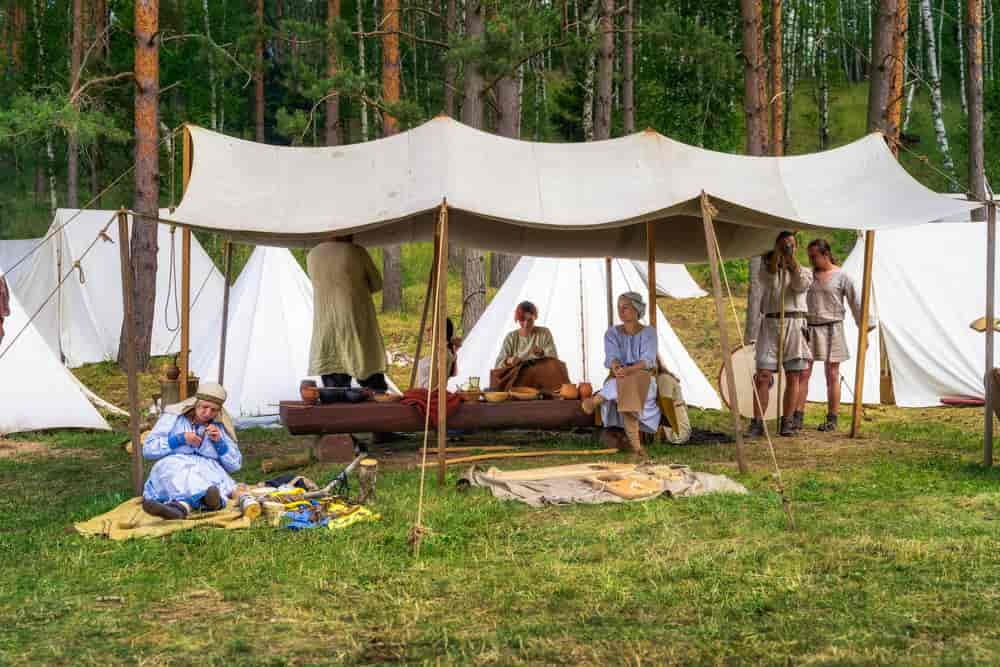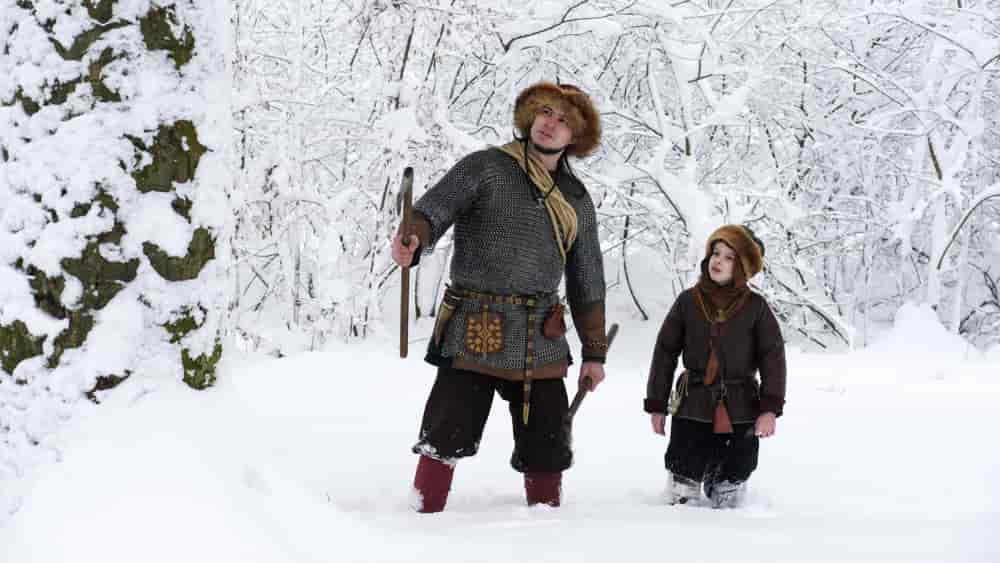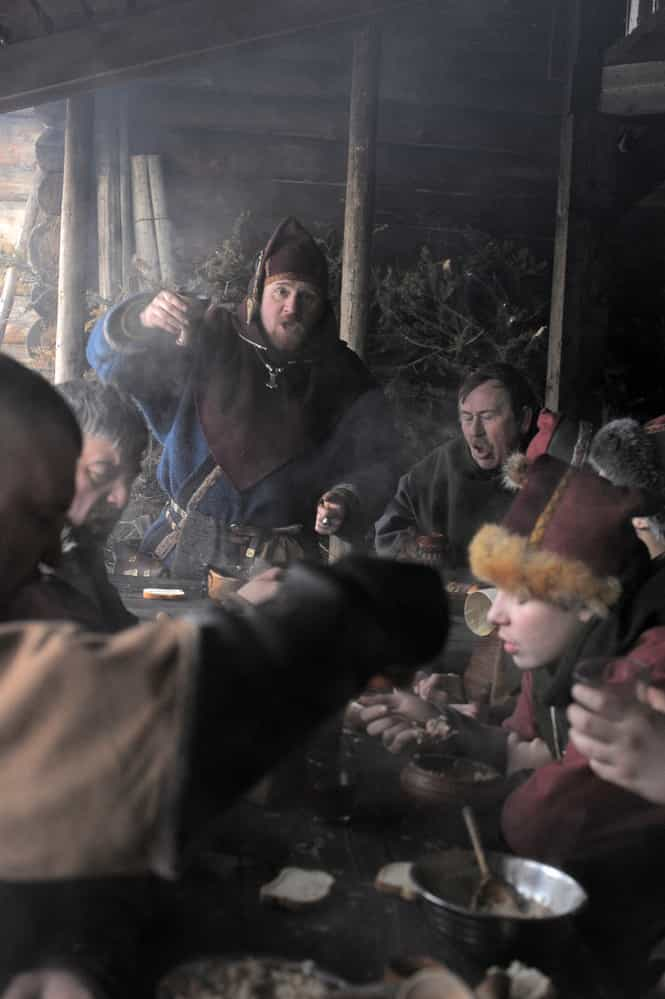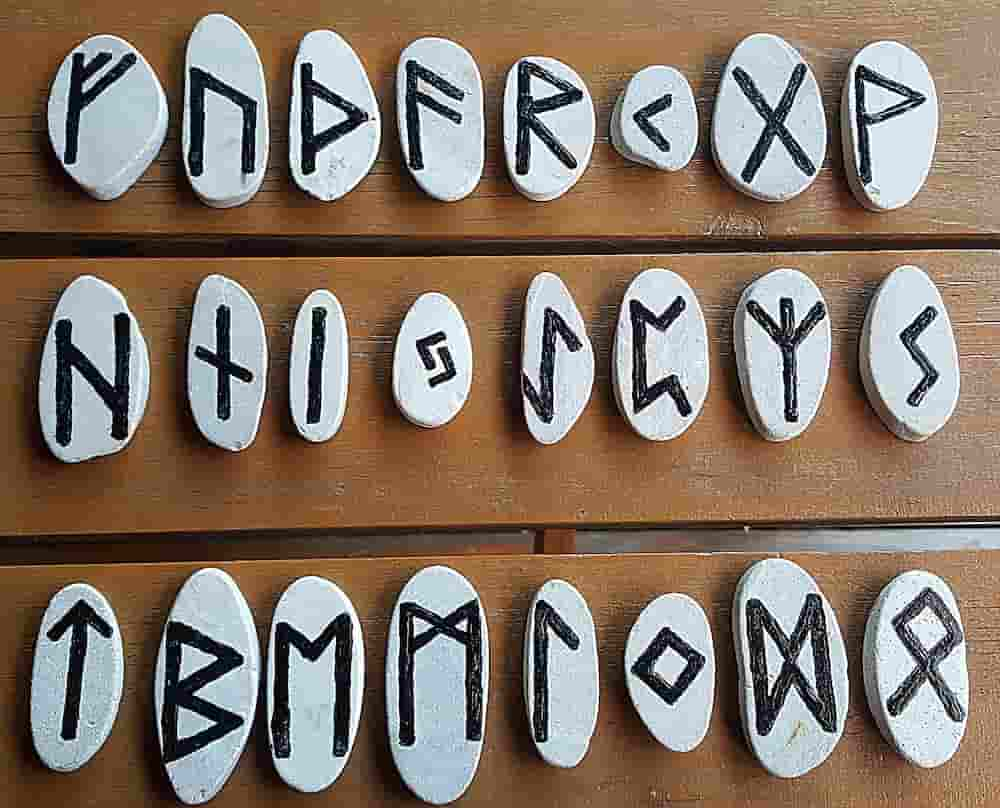While most TV shows and movies have Vikings speaking English in some sort of generic “Scandinavian accent” or even sometimes a British accent, have you ever wondered about what language did the Vikings speak in reality?
While the written language of the Vikings remains a huge mystery, research has made it easier to make sense of Viking words through the languages that they spoke. In particular, Old Norse is an ancient language that has stood the test of time to some extent due to several factors.
Oral and written communication played a significant role in the Viking Age dominance from the eighth century. Through conquest, the primary Viking language spread throughout many parts of the European continent. Read on to find out more about how this Viking language has found its way into other modern day languages.

Table of Contents
What language did the Vikings speak?
The language that was primarily spoken by Vikings was called Old Norse. It was a common language in the greater part of Scandinavia as well as other Nordic regions where the Vikings settled during their travels. Vikings also adopted other languages, such as Anglo-Saxon and Icelandic, as they settled abroad..
Even though the primary Viking language was Old Norse, it’s also important to note that Vikings were spread throughout various parts of the European regions. This means that in some instances, the language that they spoke would also be determined by where they were located. So, it’s safe to assume that they could’ve spoken a language that was closely associated with where they had settled at that particular time.
In addition, the Viking era lasted for quite some time. It also included a lot of raids and invasions in different parts. The earlier Viking era suggests that Proto Norse which had its distinctive dialects was the language that was predominantly spoken.
As time went by, Old Norse became popular since Proto-Norse was considered a North Germanic language mostly. Old Norse also had its dialects, the most well-known are the following three.
- Old West Norse. This was a combination of Old Norwegian and Old Icelandic languages. It was mainly found around the British Isles.
- Old East Norse. This was the language that was found in the Nordic tribes that were found in Denmark, Sweden and Germany (as, yes, there is some evidence of German Vikings). It even traveled far east towards Russia.
- Old Gutnish. This language originated in the Gothic language and was spoken in the Gotland Isles. It’s now considered an extinct far East Germanic language
Did Vikings speak Danish?
Before the Vikings settled in what is now Denmark, the Danes already had their own language, Proto-Norse. However, this language evolved to become part of the Old Norse language that was used by Vikings. In fact, research traces the roots of the Danish language to a dialect of Old Norse, known as Old East Norse.
In terms of what language the Vikings spoke when they settled in Dane (modern Denmark), the Vikings did speak Danish because it was already a common language of the tribes that lived there. Research suggests that the Danish that was spoken by Vikings was separated by mutual intelligibility or the relationship that existed due to geographical proximity.

This means that the Vikings who settled more inland spoke a different variety of Danish to those who lived on the coast.
People who lived in Scandinavia around the Viking era would have spoken Danish. Similarly, the Vikings who invaded Dane adopted the language that was spoken by the local tribes. Historical sources suggest that as seafarers, Vikings who lived in Dane spread the Danish language to other Eastern parts of Scandinavia when they traveled to find new trade routes.
You may also be interested in: What Did The Vikings Look Like? (The Ultimate Historical Guide)
Did Vikings speak English?
No, Vikings didn’t speak English despite pop culture suggesting this. In fact, historical sources state that English as a language didn’t exist around the Viking Age which is estimated to be between 800 AD and 1066 AD, and it has its core influences from Old Norse, the original Viking language.
History details that England was one of the first countries that the Vikings would have invaded. Although English as you know it wasn’t invented in that period, England did use a different dialect of Old English that traces its roots to Germanic languages. In fact, this original dialect is said to have been influenced by Old Norse.
Research shows that Viking invasions in England started around the ninth century. Around that time, England had four primary dialects that were spoken. Since these dialects were borrowed from Old Norse, it was easy for Vikings to learn and understand English in that era.
This made it easier for the Vikings to settle into England. As a result, the Old English Language changed to suit the heavy influences of Old Norse. There are specific words that are used today from Old Norse words that made its way through Old English.
These include the Norse days of the week, which are almost all very similar to the words used in English today.
Examples of words in English taken from Old Norse: husband (húsbóndi), cake (kaka), egg (egg), bag (baggin), gift (gift), law (lag), bull (boli), get (geta), give (gefa), take (taka), freckles (freknur)…and many, many more!
What is the closest language to the Vikings?
When you consider etymological references to the Vikings, the language that is closest to Old Norse is modern Icelandic. However, there are a number of other descendants of Old Norse, such as all the Scandinavian languages, German, Scottish Gaelic and even English to some extent.
The reason why Icelandic is considered the closest language to the Viking Old Norse lies in the three distinct dialects that existed around the Viking Age. The Norse expansion saw the widespread growth of Old Norse across Europe. The type of dialect that was spoken was mainly due to where the expansion took place.

How each dialect was spoken was also based on how it was written. Old Norse relied on specific symbols that differentiated it from languages around that era. The Old West Norse dialect is the one that consists of the Icelandic language.
Most importantly, the alphabet that is used in the Icelandic language is the one that’s closely related and helps to manifest evidence of a close relation to the Viking Old Norse language. The system of written symbols that the Icelandic language uses is deeply rooted in the same orthography that the Vikings used. The only slight difference that you find between the two languages lies with how you spell the words and some semantics.
As times evolved, the Icelandic language changed to adapt with modern-day orthography and phonology. For instance, certain letters were changed to be so that they could be considered for digital use. This means that the Icelandic language that you find today likely changed a lot of Viking words.
Related: 19 Most Famous Vikings in History (Who You Need to Know About)
Is Norse still spoken?
Yes, Norse is still spoken today. If you spend some time with Icelanders you’ll enjoy a more modern version of this ancient language. Since it’s the parent of a majority of Scandinavian languages and even English, there are words that are still very common that date back to the Norse language.
As mentioned above, you could even argue that the English language is a variation of Old Norse. Outside the Icelandic language, other languages that still carry remnants of Old Norse include Danish, Faeroese, Norwegian, and Swedish (which is perhaps not surprising given the evidence of Swedish Vikings). There’s an assumption that people in Scandinavia can understand each other since their languages were once so closely related.
Some sources agree while others don’t. The great news is that you can learn to speak at least parts of Old Norse if you really want to.
For example: Want to say “cheers” (“skål” or “skál” depending on the country) when at a bar with your new Scandinavian friends? Pronounced “skol”, it had the same meaning for the Vikings, with the word coming from the Old Norse words skál meaning “bowl” or “cup” and kál which means “to drink”.
You should understand that Old Norse changes in words similar to the inflection that you find in other languages such as English and German. The most difficult part is the pronunciation. Some people opt to use the modern Icelandic version to pronounce Viking words, while others prefer to reconstruct the pronunciation completely.
Is Norse a dead language?
Norse isn’t entirely a dead language because it maintains a strong influence over a number of modern languages, particularly those spoken in parts of regions from where the Vikings originated throughout Scandinavia. You can also see its influence in other languages such as English and German.
That said, it has evolved over the years which means that what was considered Old Norse isn’t the same language that you’ll come across nowadays.

Since Norse forms a significant part of language today, it’s crucial to keep it alive. It can teach you a lot about different languages that are mainly used in Europe. In addition, it can give scholars access to an unparalleled body of Medieval literature.
There’s also a lot of history that’s still buried in Norse scriptures. The benefit of Norse being kept as a language is that it can provide essential tools necessary to translate the chronicles of the intricate Scandinavian history. It should also aid in the appreciation of the Vikings in a different lens.
You may also be interested in: Did Vikings Have Red Hair? (The Full Historical Truth)
What language did Vikings write in?
The Vikings wrote in a language called Futhark. This is an ancient language that compromises runic alphabets that Vikings used to write scriptures, poetry, and even memorials. The name of this language isn’t familiar to a lot of people, yet, the symbols and characters have been used for centuries in different ways such as tattoo design art.
Language is a tool that’s used to reflect the world around us. This is what the Vikings used language for. Beyond this, language was used as a means to reflect their culture, beliefs, and values.
Find out more about the Nordic runes in which the Vikings wrote in our article here.
As with any other language, there was an evident relationship between the spoken and written language of the Vikings. The written Viking language, Futhark, is defined by its uniqueness. Not only is it a runic alphabet, but it consists of various horizontal and vertical lines which form a meaningful image when placed together.

Each written runic is a phonemic letter. When combined, they produce a variation of sounds that mean different things. The oldest runic inscription that you can find is the Vimose Comb that depicts the use of these runic letters.
Futhark is separated into Elder Futhark and Younger Futhark. The former is what was used by the vast majority of Germanic tribes and is closely linked to the use of Proto-Norse. On the other hand, the latter is directly associated with the Vikings.
Research traces the adoption of Futhark by the Vikings to runes and the changes that they made to the original 24 letters of the Elder Futhark runes. The Vikings refined the runes to make it easier to read the letters. There are slight differences in pronunciations between the two.
